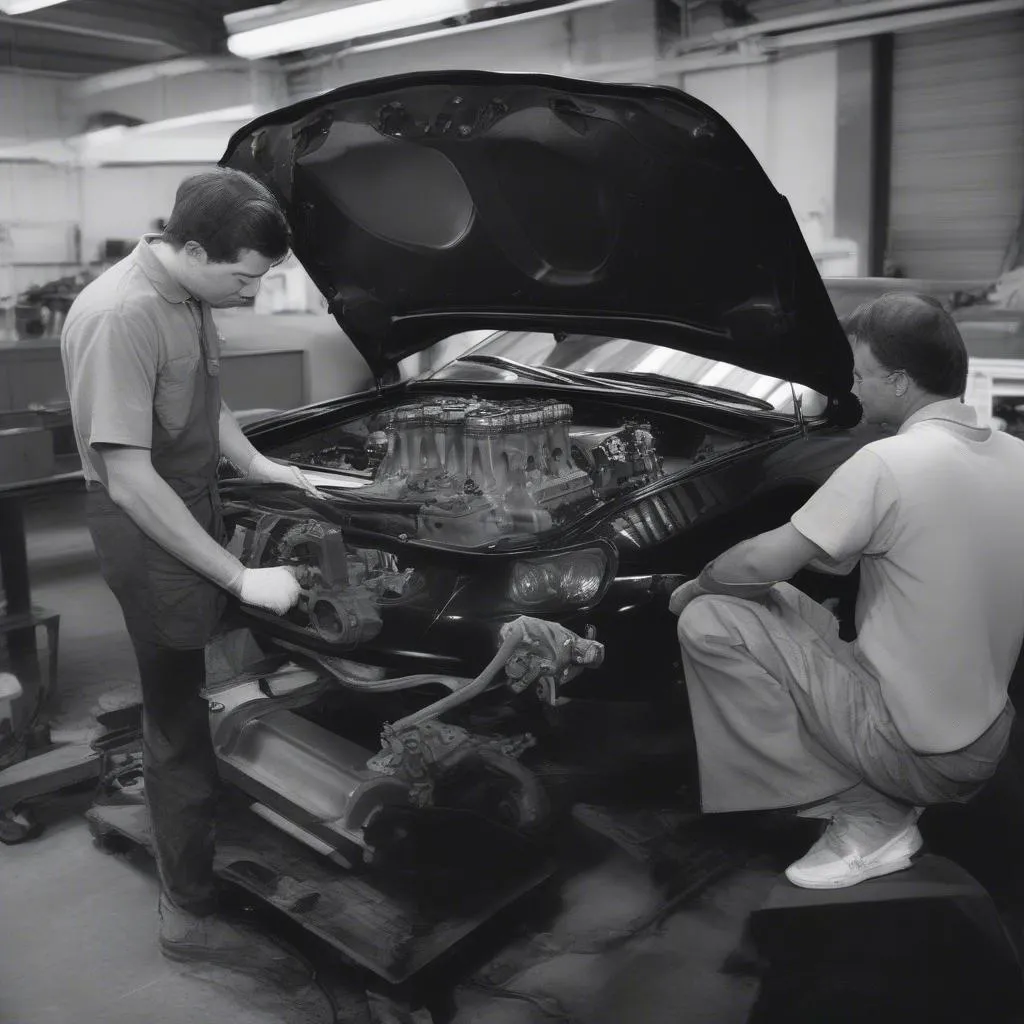The Mazda RX-7 – a name synonymous with sporty design and innovative technology for car enthusiasts worldwide. At the heart of this Japanese classic lies an unconventional engine: the rotary engine, or Wankel engine. Unlike traditional piston engines, rotary pistons provide propulsion here. But what makes this engine so special, and why has it achieved cult status, especially in the RX-7?
Revving Powerhouse: How the Rotary Engine Works and Its Advantages
In contrast to the classic reciprocating piston engine, the rotary engine operates with a triangular rotor that spins in an oval housing. This rotor performs a complex motion that enables the intake, compression, combustion, and exhaust of the air-fuel mixture. This design makes the rotary engine significantly more compact and lighter than a comparable piston engine. It also allows for higher engine speeds and smoother, less vibration-prone operation – characteristics that make the RX-7 a true cornering machine.
From the Racetrack to the Road: The History of the Mazda RX-7 Engine
The development of the rotary engine dates back to the German engineer Felix Wankel, who laid the foundation for this innovative engine type in the 1950s. Mazda recognized the potential of this technology and consistently drove the development of the rotary engine forward. The breakthrough came in 1967 with the Cosmo Sport, the first production vehicle with a rotary engine. The RX-7, launched in 1978, continued this success story and became the epitome of the sporty rotary engine.
Performance and Sound: Technical Specs of the Mazda RX-7 Engine
Over its production period, the Mazda RX-7 was equipped with various versions of the rotary engine. Power output ranged from 130 horsepower in early models to over 280 horsepower in later turbocharged variants. A characteristic of all RX-7 engines was their high revving capability, reaching speeds of over 8,000 revolutions per minute.
However, it wasn’t just the performance figures, but also the unique sound of the rotary engine that contributed to the RX-7’s cult status. The engine’s screaming high revs, reminiscent of a turbine drive, sent shivers down the spines of drivers and spectators alike.
A Challenge for Tech Enthusiasts: Maintenance and Repair of the Mazda RX-7 Engine
The rotary engine is a complex and sophisticated powertrain that places special demands on maintenance and repair. For example, the use of special oil and regular inspection of the seals in the rotor area are essential.
“The rotary engine is not for beginners,” says Dr. Hans-Jörg Müller, an expert in classic Japanese sports cars and author of the book “Mazda RX-7 – Technology, Tuning, History.” “However, those who delve into this engine type and take maintenance seriously will be rewarded with a unique driving experience.”
 Mazda RX-7 in a repair shop undergoing maintenance
Mazda RX-7 in a repair shop undergoing maintenance
Frequently Asked Questions about the Mazda RX-7 Engine:
- How reliable is the rotary engine in the Mazda RX-7?
- With good care and maintenance, the rotary engine can achieve high mileage.
- What are typical problems with the Mazda RX-7 engine?
- Known weak points include the seals in the rotor area and the ignition system.
- Where can I find spare parts for the Mazda RX-7 engine?
- Spare parts are available from Mazda dealers as well as from specialized retailers.
Are you interested in more information about the Mazda RX-7 and its technology?
Then visit our website autorepairaid.com. There you will find numerous articles, instructions, and tips on car repair, diagnostics, and maintenance.
Our team of experts is available to answer your questions. Contact us today!

